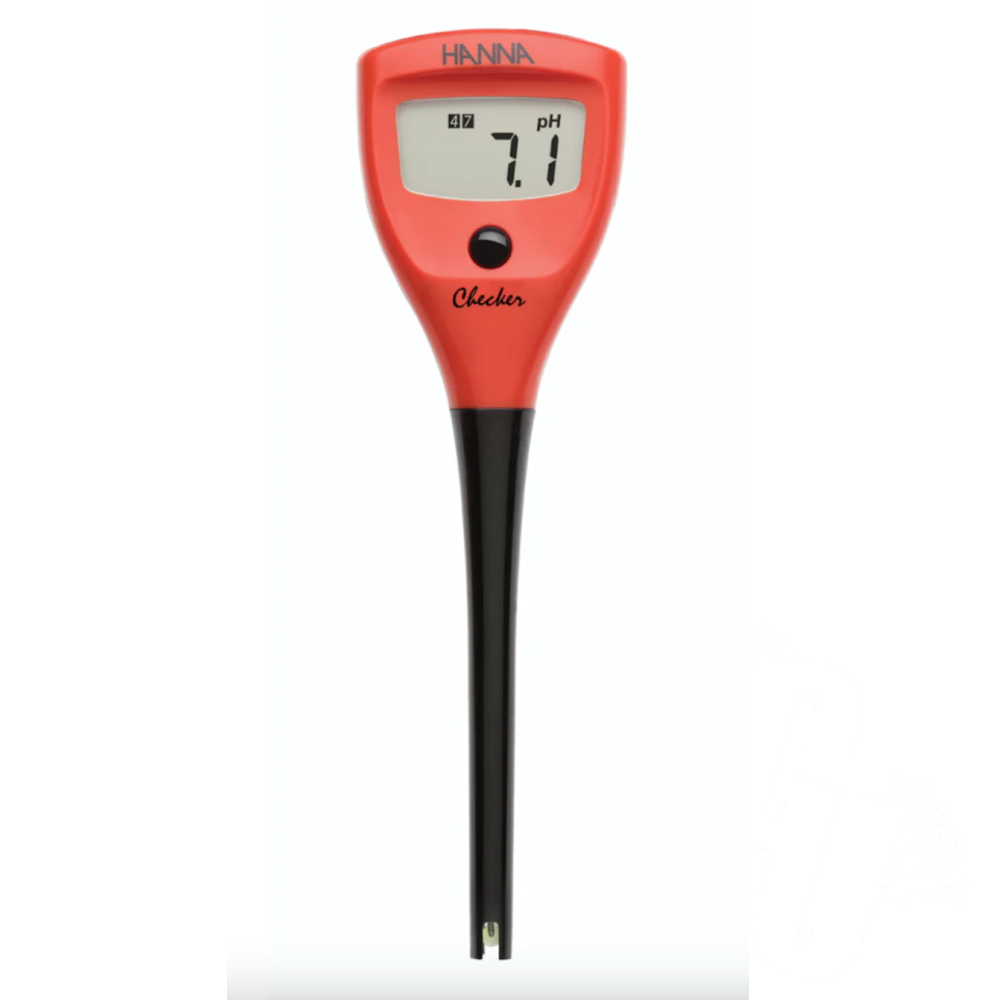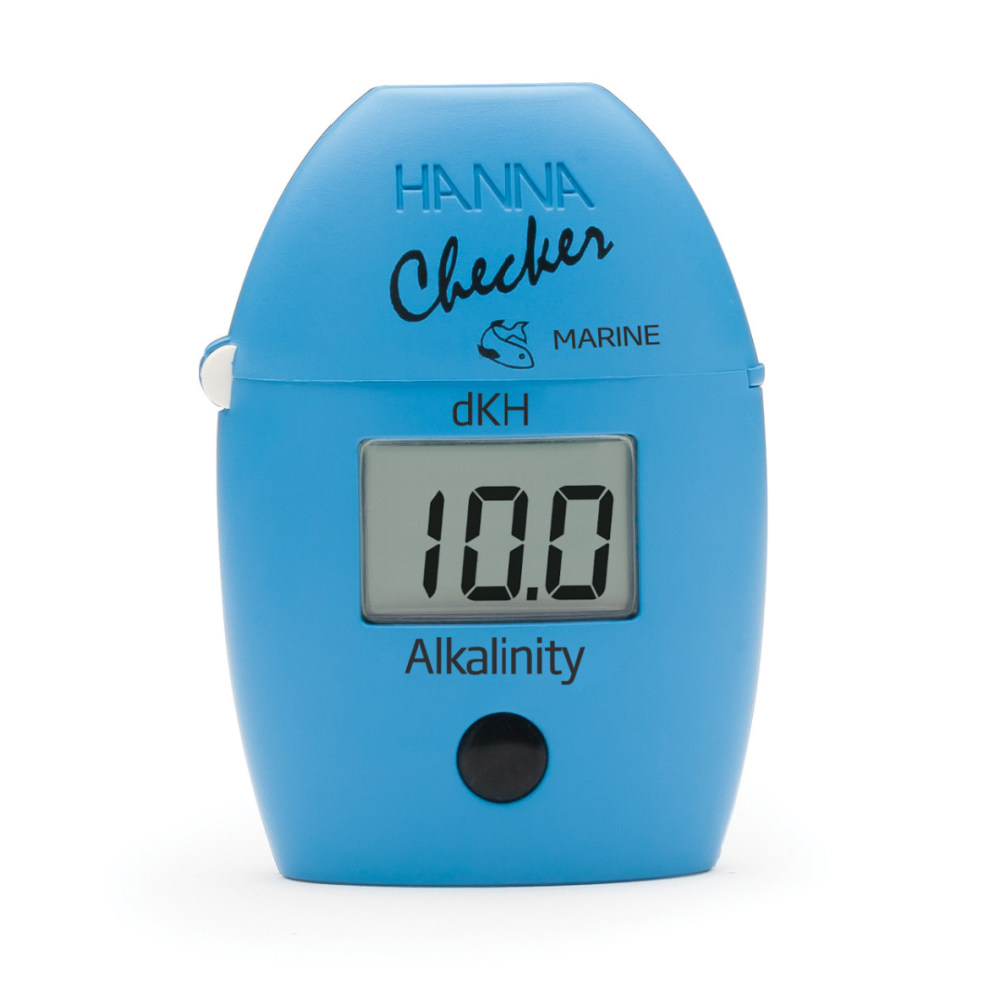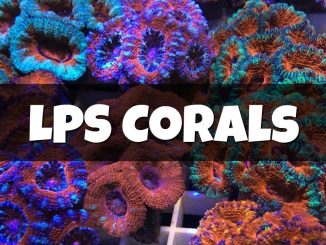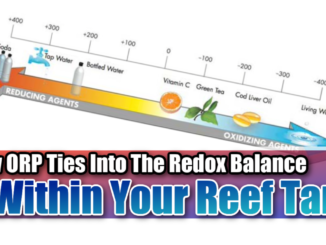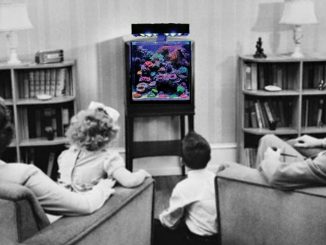
In a reef tank, maintaining proper water chemistry is essential for the health and well-being of the coral and other aquatic life. Alkalinity and pH are two important parameters that are closely linked and interdependent in marine aquariums. Here’s why alkalinity and pH are pegged together in a reef tank:
Alkalinity and pH are related concepts that describe the acidity or basicity of a solution. While they are distinct measurements, they are interconnected and influence each other in a reef tank.
- pH (Potential of Hydrogen):
- pH is a measure of the concentration of hydrogen ions in a solution.
- It is a logarithmic scale ranging from 0 to 14, with 7 being neutral. Values below 7 indicate acidity, and values above 7 indicate alkalinity.
- A lower pH signifies a more acidic solution, while a higher pH indicates a more alkaline or basic solution.
- We prefer to test pH with the hanna instruments ph meter
- Alkalinity:
- Alkalinity is a measure of a solution’s ability to neutralize acids and resist changes in pH.
- It represents the presence of substances, primarily bicarbonates, carbonates, and hydroxides, that can buffer against pH fluctuations.
- Alkalinity is expressed in terms of equivalents of calcium carbonate (CaCO3) per unit volume.
- We prefer to test ALK with hanna instruments alkalinity checker.
How they work together:
- Substances that contribute to alkalinity, such as bicarbonates and carbonates, act as buffers. They can absorb excess hydrogen ions (H+) or hydroxide ions (OH-) to prevent drastic changes in pH.
- In a system with high alkalinity, the water is less prone to becoming too acidic or too basic.
- Conversely, in a low alkalinity system, even a small addition of an acid or base can cause significant pH changes.
Key Points:
- pH measures the concentration of hydrogen ions, indicating acidity or alkalinity.
- Alkalinity measures the ability of a solution to resist changes in pH.
- Substances contributing to alkalinity act as buffers, helping to stabilize pH in a solution.
While pH reflects the current state of acidity or alkalinity, alkalinity represents the system’s capacity to withstand pH changes. Together, they provide a comprehensive understanding of the chemical characteristics of a solution, especially in environmental contexts like water bodies.
- Buffering Capacity: Alkalinity, also referred to as carbonate hardness (KH), measures the water’s ability to resist changes in pH. It acts as a buffer that helps stabilize the pH level in the aquarium. When alkalinity is at an appropriate level, it prevents rapid and drastic pH fluctuations, which can stress or harm the reef inhabitants.
- Calcium Carbonate Precipitation: Corals and other reef-building organisms use calcium and carbonate ions from the water to build their skeletons and structures. These ions combine to form calcium carbonate, which is the foundation of coral reefs. If alkalinity levels are too low, there might not be enough carbonate ions available for coral growth, leading to weakened skeletons and slower growth. This can also lead to a decrease in pH, as the process of calcium carbonate formation can release carbon dioxide, causing pH to drop as well.
- pH Stability: pH is a measure of the acidity or alkalinity of a solution. In a reef tank, maintaining a stable pH is crucial because fluctuations outside the optimal range can stress the inhabitants. Corals, in particular, are sensitive to pH changes, and rapid swings can inhibit their ability to build their calcium carbonate skeletons. By maintaining proper alkalinity levels, you help maintain a stable pH by providing a buffer against changes.
- Calcium and Magnesium Levels: Alkalinity is closely related to calcium and magnesium levels in the aquarium. These three elements, collectively known as the “foundation elements,” play a critical role in coral growth and overall reef health. A balanced ratio of these elements ensures optimal coral growth and coloration. Monitoring and adjusting alkalinity alongside calcium and magnesium levels help maintain this balance.
- Chemical Equilibrium: Alkalinity and pH are part of a complex chemical equilibrium in reef tanks. Changes in one parameter can influence the others. For instance, as corals and other organisms consume calcium and alkalinity, this can lead to a decrease in pH due to the release of carbon dioxide. Conversely, maintaining appropriate alkalinity levels helps prevent pH from dropping too low.
To sum up, maintaining proper alkalinity to pH in a reef tank is essential for maintaining stable water conditions that support the health and growth of coral and other marine life.
Proper alkalinity levels help stabilize pH, provide the necessary carbonate ions for coral growth, and maintain the delicate chemical balance required for a thriving reef ecosystem.
Regular testing and adjustments of both alkalinity and pH, along with other relevant water parameters, are crucial for successful reef keeping.


